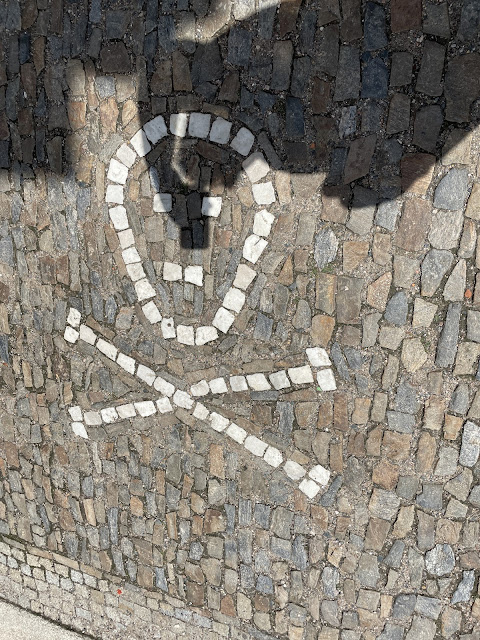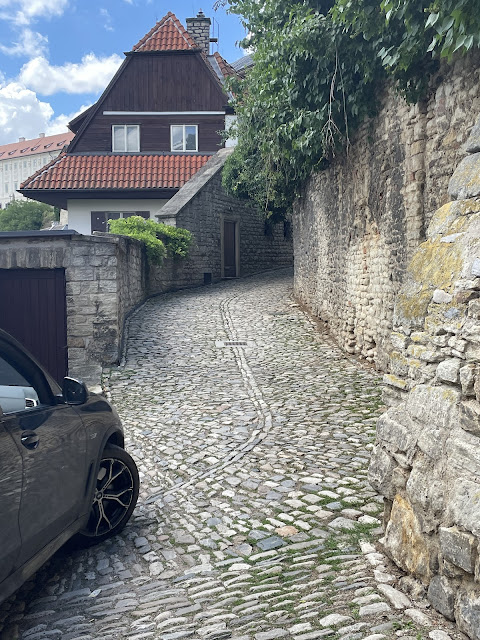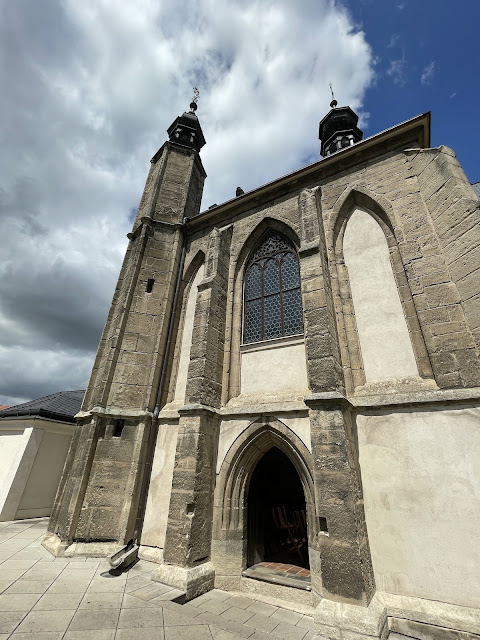We started fairly early, packing up from our cabin and heading to our next country - Czechia.
In 2016 the Czech Republic approved the use of Czechia as its formal English Language name. The country was established when the Austro-Hungarian Empire collapsed after World War I as Československo (Czechoslovakia) in 1918. When Nazi Germany occupied the country in World War II, it was split into two parts, Bohemia & Moravia (which was primarily Czech) and the Slovak Republic. After the war, these two were combined to make the Czechoslovak Socialist Republic under Soviet control. In 1989 the country was freed from Soviet control and in 1992 the Federal Assembly dissolved the country into the Czech Republic and the Slovak Republic (Slovakia).
While the Slovak Republic was given the shortened English name of Slovakia, there was not an agreed upon shortened name for the Czech Republic as most of the proposed names did not fit. Bohemia (Čechy) did not include the Moravia districts and while Czechia was proposed, the name was deemed too close to Cheka which was a name for the KGB in the area.
In 2016 the name Czechia was accepted as the country's name, with the state title being Czech Republic.
One of the biggest tourist sites in Czechia is the Sedlec Ossuary - the bone church. Located in the Sedlec suburb of the town of Kutná Hora, the Ossuary is one of the most visited attractions in Czechia.
The church was originally the Sedlec Abbey and built over the Hřbitovní kostel Všech Svatých (Cemetery of All Saints).
The story of the Ossuary started with an abbot from Sedlec, who travelled to the Holy Land in 1278. He returned to Sedlec with some soil from Golgotha, the hill where Christians believe that Jesus was crucified. He sprinkled the soil in the abbey cemetery, which caused it to become a popular place to be buried. Coupled with the Black Death and the Hussite Wars, the cemetery filled fast and had to be expanded. When the church was built in 1400, many mass graves were uncovered and the bones were stored in the chapel. In 1870 a woodcarver by the name of František Rint, was employed by the Schwarzenberg noble family to put the bones in order.
Rint created the bone sculptures, such as chandeliers that utilized each of the human bones and the crest of the Schwarzenbergs made from bone. Maybe because we had already explored the Paris Catacombs, the Sedlec Ossuary seemed a little underwhelming. It was also undergoing repairs at the time, so that may have contributed to it. There were no photos allowed inside the Ossuary, but they can easily be found online, such as here.
There are the bones of between 40,000 - 70,000 people in the Ossuary.
 |
| Road outside the Ossuary |
 |
| Gates |
 |
| Details about the curch |
 |
| Part of the cemetery |
 |
| Escaping the road |
You can see the road here. Kristine got about three clicks down the road before she had to reverse.
Our drive was about an hour into Prague (Praha), the capital of Czechia and the historic capital of Bohemia.
We were staying at the Historic Villa Apartments and we even had our own small garage. The entrance didn't look like much, but the building was pretty cool:
The kids were tired (probably from all the hard ipad usage they'd had along the drive), so they wanted to chill in the apartment and catch up on the ipad time they'd missed in the five minute walk from the car to the apartment doors. Kris and I decided to take advantage of the situation and caught a tram into Prague.
We checked out the town hall, astronomical clock, Lego museum and picked up a funnel cake before heading back home. Here's a few quick pics of our trip - I'll talk more about Prague in the next post:
 |
| If the power lines get crossed in just the right way they summon Super Cable Jesus |






















No comments:
Post a Comment